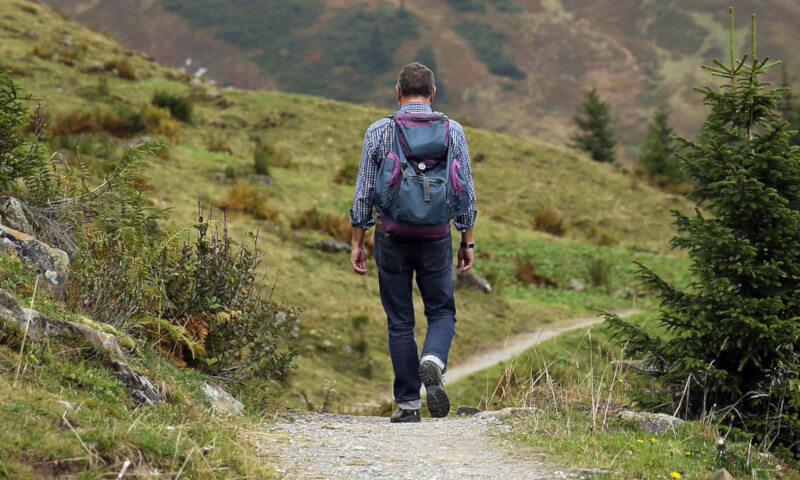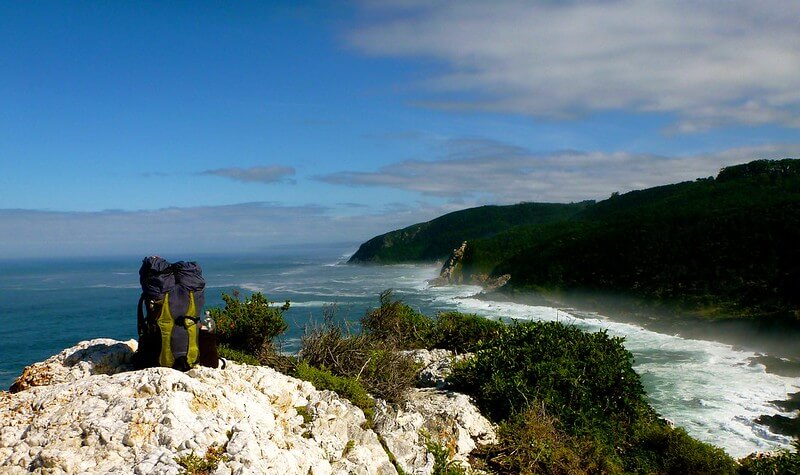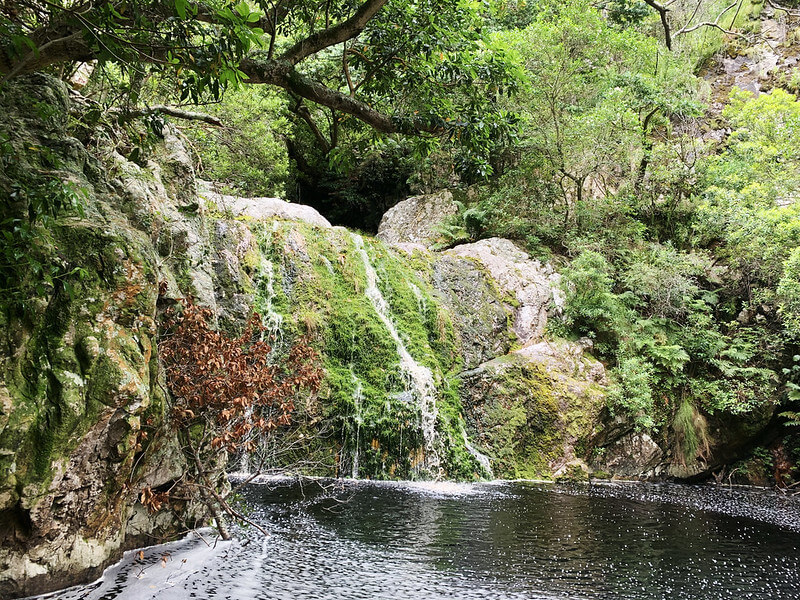Hikers in South Africa can embark on a wide variety of amazing day hikes, as well as multi-day treks that feature comfortable lodges or even safari-style tents. To go on some paths, you’ll need a guide and a permit to do so in advance.
Wild creatures varying from zebra and wildebeest to springbok and eland (don’t worry; these routes don’t have lions or Cape buffalo on them) are a near guarantee almost anywhere you travel in South Africa. As a birdwatcher, you’re in for a truly special experience. South Africa is among the best places in the world to go bird watching because it is home to approximately 900 different species of birds that can survive in a wide range of environments.
Rhebok Hiking Trail

Two-day, Strenuous
19-mile (31-kilometer)
There’s a good reason why places like Kneebrake and Hartbreek have such menacing names: the ascent of Generaalskop, at almost 2700 meters (9000 feet), is no picnic. In Golden Gate Highlands National Park, South Africa’s sole park dedicated to the preservation of landscapes, you may do a two-day hike through highveld landscapes so stunning that you won’t even notice the exertion. Probably.
On the first day, you’ll walk 16 kilometers (about 10 miles), taking in breathtaking views of distant mountains, narrow kloofs (ravines), swimming-friendly rock pools, and thundering waterfalls. Animals like the eland, springbok, zebra, and grey rhebok, which formerly flourished, have been released into the wild and now run amok. The skies are filled with black eagles and jackal buzzards. Generaalskop’s beauty, with its top-of-the-world views into Lesotho, is revealed on the second day after an overnight stay at the riverbank Rhebok Hut; nevertheless, getting there requires a strenuous ascent of 3280 feet (1000 meters) along a trail that is steep, narrow, and rocky. However, some argue that the brutal drop is even more exhausting than the previous steps.
- SANParks requires advanced reservations for groups of up to 18 people.
- Hikers need to be at least 10 years old.
The park contains various shorter paths if you don’t have two days or the energy to hike the longer ones, such as the easy 2.4-mile (3.9km) Mushroom Rock Trail, which passes by beautiful wildflowers, and the impressive red-hued Mushroom Rock.
The Otter Pathway

Excellent multi-day Trek
5 days, 28 miles (45 km)
Easy
As far as multi-day hikes go in South Africa, the Otter Trail stands out as the most well-known. In 2022, it will celebrate its 50th year as the oldest path in the United States. Between the Storms River mouth and Nature’s Valley, the Otter Trail winds along the Garden Route’s breathtaking rocky coastline, offering stunning views of the blue sea, indigenous coastal ecosystems, coastal pools, vacant white sandy beaches, lots of fynbos (shrubs and trees distinctive to the southern tip of Africa, showcasing featherlike trees and shrubs), and the chance to spot the elusive Cape clawless otter, which lives near rivers and can sometimes be seen foraging in shallow sand.
It’s also possible to see whales blowing bubbles and dolphins playing. There are 11 river crossings and numerous steep climbs and descents along the way, with the crossing of the Bloukrans River being the most technically challenging because it requires a swim followed by a climb up a rope. Inside the seaside log cabins, the sound of the waves is a soothing nighttime accompaniment.
The best time to hike the Otter Trail is any time between October and April when temperatures are mild and wildflowers are in full bloom. The trial has an age restriction of 12 and those above 65 are not permitted. SANParks requires bookings, and only 12 hikers per day are allowed to begin the path. Bookings (up to a year in advance) are accepted.
If you want to hike the Otter Trail but it’s full, you can follow a similar route along the beginning of the Waterfall Trail. The Dolphin Trail is an alternative that is both easier and more comfortable than the Otter Trail, while yet providing access to the same breathtaking landscape. A half-mile (800 m) trail winds through the Garden of Eden along a wheelchair-accessible wooden boardwalk, discovering a fantastical land of towering lichen-covered trees and trickling streams.
Hiking the Blyderivierspoort

The Best Canyon Hike is a Grueling 5 Day, 37 Mile (60 Km) Trek
Some canyons are more impressive than others. The Blyde River Canyon in Mpumalanga province is the nation’s biggest green, surrounded by subtropical flora, and the third largest canyon on Earth. The canyon, formed by the Blyde River (formerly dubbed Motlatse) in the north Drakensberg mountains, can be discovered in a number of ways, one of which is by driving the world-famous Panorama Route.
The Blyderivierspoort Hiking Trail is the best option if you want to immerse yourself in the canyon’s atmosphere at river level (aka Blyde River Canyon Trail). All along the path from God’s Window to Swadini, you’ll see tide pools, waterfalls (more than anyplace else in South Africa), and fantastic, lichen-covered rock formations. One can take in breathtaking vistas of the open Lowveld. Watch out for baboons, rheboks, duikers, and klipspringers.
The Mpumalanga Tourism and Parks Administration is where all reservations must be made. If you are not acquainted with the area, it is best to travel with a group. Camping beneath the stars, rustic huts, and cozy cottages are all options for lodging. Two- and three-day treks are also doable.
Trekking the Leopard’s Kloof

Favorite Family-friendly Walk
90 minutes for a 1.8 Mile (3 Km) Moderate Loop
It is said that the trail’s namesake leopard-scratched tree is located at the trailhead in the Harold Porter National Botanical Gardens in Western Cape. No leopards are likely to be spotted during the day, although they are still there, and more active at night. As you climb further up the forested kloof (ravine), you’ll be rewarded with increasingly breathtaking views of the glistening Atlantic Ocean. Leopard’s Kloof waterfall, plunging into a picture-perfect pool, is the showpiece at the end of the hike. At the base of the waterfall in the summer (from the middle of December to the end of January), the renowned red disa flowers in all their magnificence set off the mosses and the towering rocks.
Children of all ages will enjoy the sense of adventure afforded by the trail’s multiple river crossings and the ascent of wooden ladders to reach the waterfall, while parents will appreciate the trail’s clarity and comprehensibility.
At the Very Edge of the Botanical Gardens is Where You’ll Find the Trail
Make sure to stop by the front desk and request the key before beginning. The 440-acre garden is nestled in a picturesque valley between the Kogelberg’s slope and Betty’s Bay, in the center of the coastline fynbos, a floral abundance that includes ericas, restios, and king proteas, the country’s national flower. There are little bites available in the teahouse.
The Olifantsbos Shipwreck Trail is the Finest Historical Walk
1.5 hours for a Circular Trip of 1.8 Miles (3 Km)
Not Difficult
King John II of Portugal renamed the cape south of Cape Town from “Cape of Storms” to “Cape of Good Hope” in the 15th century, but he should have kept the previous name in light of the 3,000 or more shipwrecks that litter its freezing depths. In the Cape of Good Hope Nature Reserve, you can hike along the spectacularly rocky shoreline to see the ruins of various ships. The Thomas T. Tucker Trail, also known as the Olifantsbos Shipwreck Trail, is a short, simple hike full of historical significance.
When you leave the Olifantsbos parking lot, you’ll enter the rare fynbos floral realm, home to 8700 different species of heather-like trees and bushes (including the protea, South Africa’s national flower). Ostriches, Cape mountain zebras, and red hartebeests are all potential sightings. The US Liberty ship Thomas T. Tucker has conspicuous, rusted remnants at Olifantsbos Beach. It crashed on Albatross Rock while trying to escape being spotted by a German U-boat as it made its way to the African Front during World War II (everyone survived). The hull can be seen in the water, making it a popular site for scuba divers.
Spend some time on the deserted beach searching for sea life in the rock pools and keeping an eye out for the long-legged, bright-beaked African black oystercatchers. The hike can be extended to visit the sunken ship Nolloth and the spring-fed wetland of Sirkelsvlei, located further inland.
Source: lonelyplanet.com

